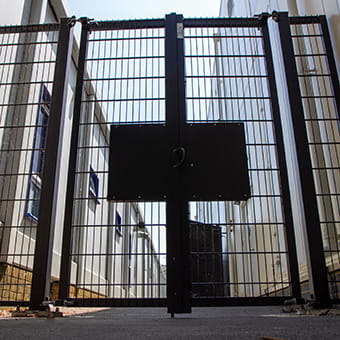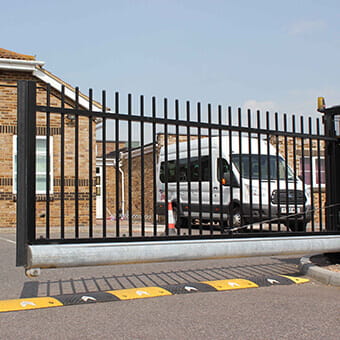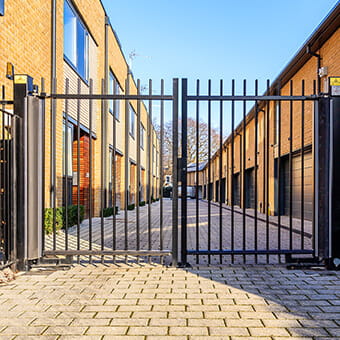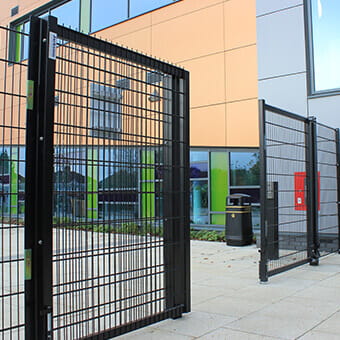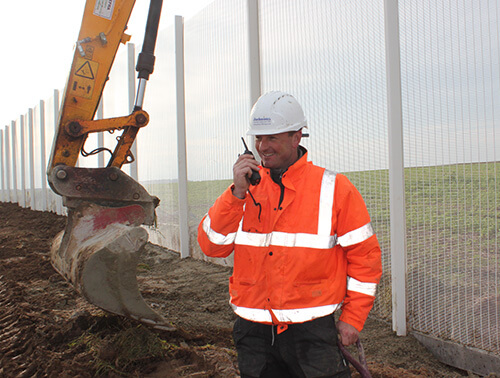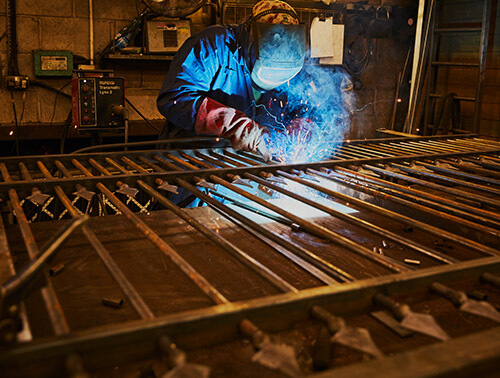Our other sites:
Gates are an integral security feature for schools, industrial estates, commercial premises and restricted-access facilities; controlling entry and egress from a site. However, the integrity of their safety and security can only be maintained if the gates meet certain standards, and they can only be legally operational if they adhere to gate safety legislation.
Manual and automated are both commonly used; often depending on the size and type of gate, and there are different guidelines for their safe operation.
Gate safety legislation for automated gates and barriers
Automated gates (whether it is a swing or sliding gate, a rising arm barrier, a bi-folding or telescopic sliding gate) are required by law to comply with The Supply of Machinery (Safety) Regulations 2008. This is one of the main legislations governing the harmonisation of essential health and safety requirements for machinery in the UK since leaving the EU.
In order to achieve compliance, the gate should undergo a full risk assessment. It should also be supported by a minimum of two different types of safety device. Corresponding with Gate Safe guidelines, we recommend that photocells or light curtains and pressure edges should be installed on every gate or barrier, regardless of whether a force limitation device has been installed. In addition, other safety devices can be installed such as signage or a flashing light, which provides a warning that the gate is in use.
Critically, specifiers of automated gates should take due care over the installation procedure and implementing a maintenance regime. The reasons for this go beyond compromised security: failure to do so may lead to serious injuries or loss of life.
Gate safety legislation for manual gates and barriers
There is very little published guidance, best practice and legislation that relates to manually operated gates and barriers. This is one of the reasons why Jacksons Fencing has prepared the CPD seminar: ‘Gate Automation, Legislation and Safety, Why Take the Risk?’ This material outlines the key considerations for different types of gates, and offers guidance on the different types of risks associated with each gate system.
As there is little in the way of legislation or statutory law specifically relating to manual gates, they are easier to specify, but the burden of responsibility shifts to the specifier to ensure fitness for purpose and safety. As a starting point, specifiers should follow relevant guidelines set by The British Standards Institution, which produces technical standards on a wide range of products and services, along with issuing certification.
BS 5709:2018 covers gaps, gates and stiles, while BS 6180:2011 gives recommendations for the construction of barriers in and around buildings. If appropriate for your site, BS EN 1176 gives guidance on playground equipment, including gating.
Once your security gates have been specified, built, and installed, ongoing safety maintenance is vital for their proper operation. While manual gates may not require frequent engineer visits, the gate structure should still be frequently checked for damage such as corrosion and cracks, and include inspection of the fixtures and hinges. The gate should be kept clean and lubricated, with test results ideally recorded in a maintenance log. Finally, it’s best to check with your local authority whether planning permission is required for the gate on your proposed site, and if there are any restrictions on barrier design.
For further information on specifying gates and the relevant standards and legislation, take a look at our related blogs below.
Related Products
Jacksons Fencing have a large range of related products, all complete with our 25 year guarantee. If you cannot find the item you are looking for, please do not hesitate to call our friendly sales team.
Related Content
Top
